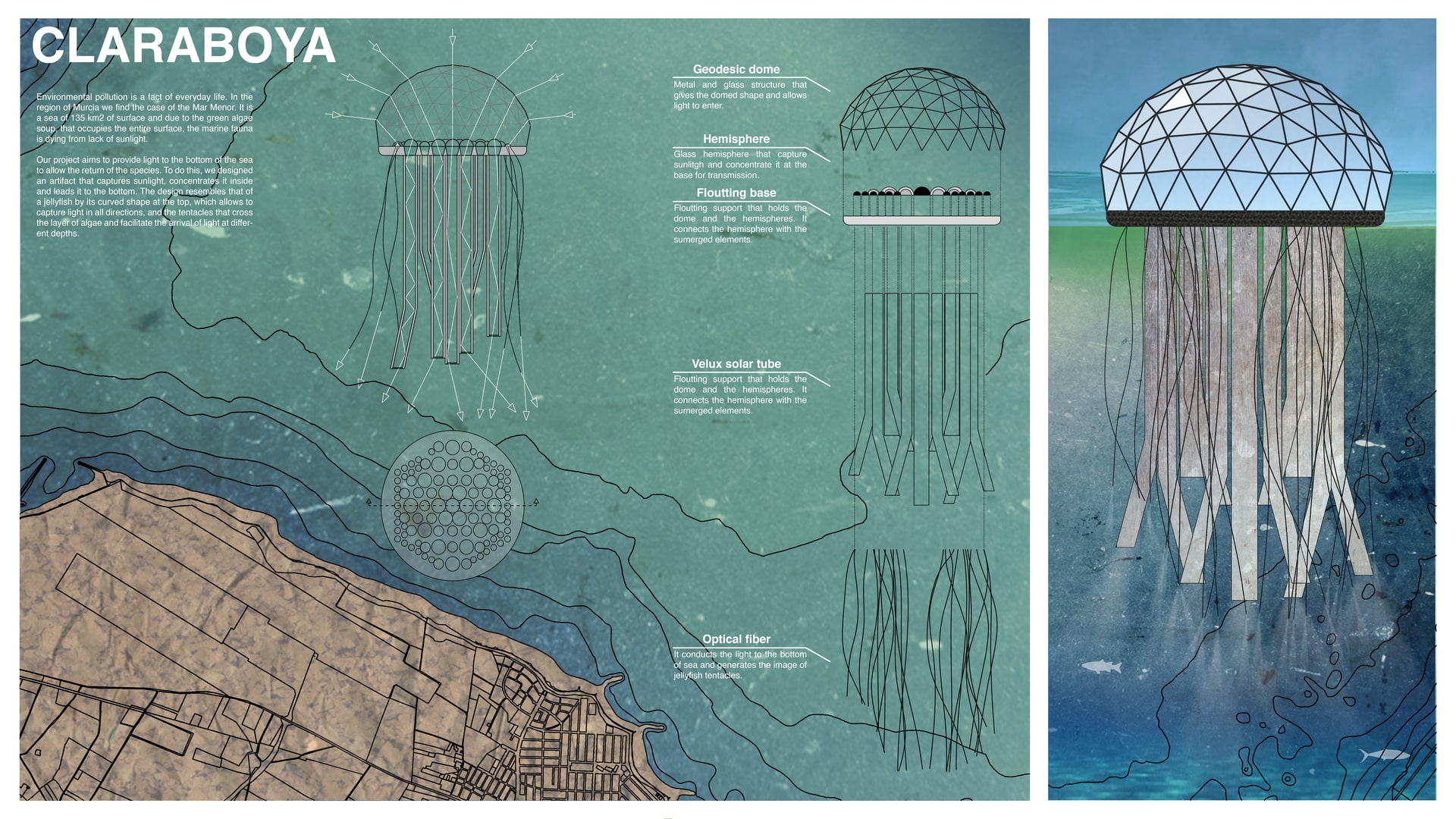Project Description
Our project focuses on the Mar Menor located in the Region of Murcia, Spain. It aims to provide a solution to the lack of light in its waters caused by the proliferation of algae that has occurred on its surface. This environmental catastrophe that has produced the contamination of its waters is due to: the alteration of the soil, intensive agriculture based on fertilizers, overexploitation of water, uncontrolled urban growth, the profusion of illegal extraction and contaminating discharges. After a detailed study and several consultations with expert biologists that are studying the area, a decrease in the number of marine species that inhabit the sea is detected due to the increasing amount of seaweeds that have given rise to the so-called "green soup". This "green soup" is located on the surface of the water reaching a depth of three meters that prevents the passage of light into it. This has produced a reduction in the fishing activity due to the absence of marine life in the waters, since the few remaining species agglomerate on the coasts where the incidence of sunlight occurs. After analyzing the situation, our project focuses on crossing the three critical meters produced by the "green soup" and establishing a connection between the surface and the seabed that allows light to reach these waters. After several studies on the shape that would best suit our goal, the design that resembles a jellyfish is adopted. The design, like the main parts of the jellyfish, features a bell and tentacles. The bell, the upper part, would be located above the surface of the water. It would be made of a glass geodesic dome with a metal structure that is held on a floating base and 103 solar glass hemispheres will be implanted inside of it. The tentacles, the lower part, make up the submerged part of the installation. There are two types of tentacles: the thin ones made of optical fiber and the thick ones formed by Velux solar tubes. The length of the tentacles will always be more than three meters in order to ensure that the "green soup" of algae is completely pierced. The total length of the installation would vary according to the depth of the location in the sea. The interior of the tentacles of the Velux solar tubes will be made of a reflective material that allows to conduct as much sunlight as possible. To avoid unwanted displacement and the agglomeration of several of these devices, they will be attached to the ground using the same technique that is used for the buoys. The operation of the device consists of capturing sunlight in all directions by means of the transparent dome and concentrating it on the hemispheres that would be connected with the tentacles that will transmit the light towards the bottom of the sea. The diversity of the shape and length of the tentacles allows the light to spread and cover a larger area. Thereby, while looking for a way to eliminate seaweeds from the surface, the marine life of the Mar Menor can be maintained, avoiding the extinction of the species in its waters.
